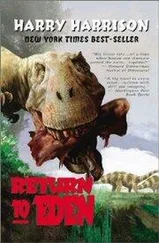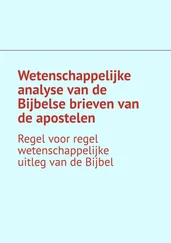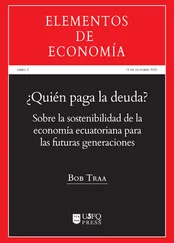The police doctor tries to explain the situation to Beate Becht while simultaneously doing his utmost to untangle the confusion left behind by Yori’s declarations. “I need time to study these documents,” he concludes. He can see that the photographer is growing impatient. How long before she takes things into her own hands? Adachi asks himself if Takeda knows what he’s got himself into. The inspector is in the middle of an intricate hornets’ nest and needs to be kept abreast of unexpected developments.
Adachi’s thoughts are interrupted by the bleating of the police radio in his living-room.
Hiroshima – in front of the Shiga residence in Saijo – Nagai Shiga and Takeda – night, March 15 th1995
The economist is standing next to Takeda’s car watching the lights in his house go out one by one. “My brother Tomio was the oldest.” He sounds calm, but there’s still a tremor of subdued tension in his voice. “He inherited our father’s professional secret and was ordered that he should commit seppuku rather than reveal it to anyone.” He turns to the inspector: “In those days, in the early 1950s, it didn’t sound so crazy. People still believed back then,” he says defensively.
“Professional secret?” Takeda asks, ignoring Nagai Shiga’s remark . “You mean ‘the secret of the Golden Lily’? Wasn’t that all a bit dramatic?”
“Exactly, but I say it again: the generation before ours was a different race altogether, obsessed by different ideals. Japan was a different country in those days.” Nagai Shiga smiles, but with a hint of malice in his eyes. “We even had a god as our leader.”
“They say it was the emperor himself who gave orders for Japan’s war treasures to be hidden in out of the way places.”
“The idea came from Hirohito, but it was Prince Chichibu who did the work, with the help of zaibatsu, the army and the secret service. The prince apparently didn’t think twice about hiring criminals for the job. Gold, platinum, silver, diamonds, antiques and objet d’art were stored away in underground warehouses. Prisoners of war did the actual work. Afterwards they were shot or buried alive.”
“Your father Taro Shiga helped choose a number of those locations as Hirohito’s banker.” Takeda doesn’t mention the fact that his hypothesis comes from a recently published American book. He hopes to take the economist by surprise and tempt him to reveal more. Nagai Shiga takes a step backwards. For a moment Takeda fears he has gone too far. “A credible hypothesis,” says the economist. His voice deepens. “Nobody can keep a secret where so many people are involved. A year ago I was approached by Kenji Eda, a professor of history in Tokyo. He had evidence of my father’s complicity. But I had already figured it out because of the family secret that had been passed on to my brother Tomio and some of the vague remarks he made when he had been drinking. I thought it was all about his involvement in the emperor’s unsavoury secret, not about complicity in the murder of so many prisoners of war.” A sad smile. “Do you have a family, inspector? You know how it works. We all vow secrecy and fidelity come what may, but sooner or later we end up looking for a shoulder to support our ailing consciences. When my brother talked – albeit indirectly – about the Golden Lily, I wrote it off as wartime idealism. I knew that my father had close links with the imperial family and that he revered the wartime ethics of the day. As a banker, he was one of the driving forces behind Japan’s war effort. But please understand me: he was my father. I wanted to believe that all those stories were totally unfounded, or at least exaggerated.”
Takeda thinks about his own father, the unknown Japanese soldier, rapist, child killer, and nods. “My brother laughed in my face because I pretended not to believe him. He too was a banker , just like my father. Do you understand? He was conditioned to think in terms of money flow and power. In his eyes, I was a boring and slightly naive academic who spent his days poring over tables and economic fluctuation charts, a slave to the system, while he was at its helm. He dismissed my predictions of the present crisis. His confidence in Japan’s monetary and economic resilience was limitless. When the bubble burst he didn’t see it coming, or didn’t want to. And even when it was impossible to deny, he still maintained his confidence in the ability of the banks to rectify the situation and restart the economy. I wasn’t the guardian of the family secret. That was his burden. But when I look back I have the feeling he wanted to share it and that he was frustrated by my inability or refusal to believe him.” The economist shakes his head. “Why did I behave as I did? Jealousy? Contempt? Shame about my family? I don’t know. In any event, a couple of months ago Tomio handed me a photograph and observed cryptically ‘take good care of this should anything happen to me’. Here, I had a copy made.” Nagai Shiga fishes a black and white photo from his jacket pocket. Its background grey with age, it pictured two men in uniform from the Second World War posing in front of a life-size statue of Kannon , the hermaphrodite god of mercy and compassion. In line with tradition, this emanation of the Buddha glistened in polished gold. The crisp shadows suggest the photo was taken with powerful lighting. Takeda has the impression that it was shot in a cave. While both men pose straight-backed and rigid, he can see no evidence of pride in their eyes. On the contrary, they’re wide open, as if whatever they’re looking at is a shock to the soul.
“I checked it out,” says the economist softly. “There was no golden statue of the Buddha in the caves of Abukama-do when they were officially discovered in 1969. But this picture is clearly from 1945.”
“How do you know it was taken in Abukama-do?”
“Look at the Christmas-tree like stalagmite behind the statue of Kannon . It’s more than two meters tall and is considered one of the biggest in the Far East. There’s nothing like it anywhere else.”
Takeda looks at it carefully and nods. “So where is the statue buried?” the economist continues. “The larger caves at Abukama-do are open to the public, but more than two kilometres of corridors and smaller caves are inaccessible. You need a precise location in an underground complex like that.”
“Which your brother knew?”
The economist gestures with his hands: who knows?
The radio in the police car splutters into life. In spite of the tinny quality of the message, inspector Takeda recognises the voice.
But he refuses to believe what it says.
Hiroshima – the Suicide Club squat – Kabe-cho – Reizo Shiga – night, March 15 th1995
Reizo Shiga switches on the lights in the main room of the Suicide Club. The place is empty. Recent tensions, arguments about the best drugs and the best prices, Reizo’s leadership style and the growing influence of the Aum Shinrikyo sect have driven the group apart. At the end of the day, junkies are only interested in one thing: their next score.
Reizo’s ideas about a youth front determined to eradicate tired and decrepit social structures sounded cool as long as his few followers were high and could gesticulate wildly in long discussions about the inhumanity of the social system and the elite who were to blame for the profound economic crisis ravaging the country. They whined about the education system that turned young people into well-trained rats, paralysed by stress, and forged plans to take out bankers, the ceos of major companies, and well known politicians as the German Baader-Meinhof group had done in the 1970s.
Читать дальше












